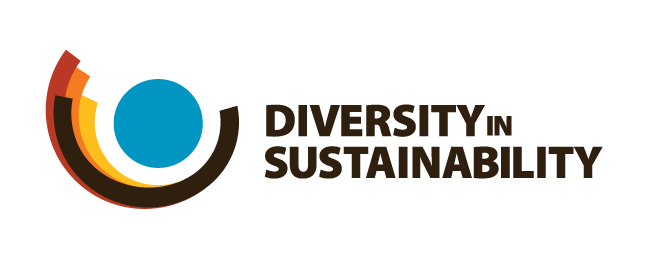
Why is this important?
““Human diversity is just as critical to society as biodiversity is to an ecosystem; without it there can be no healthy functioning. The loss of diversity within mainstream systems and structures has left a fracture in our societies that must now be healed, through the purposeful and systematic inclusion of diverse voices, including the voices of the natural world, within the social dialogue.”
”
Diversity remains a challenge in the field of sustainability
Over the past few years, waves of protest have swept across the globe in support of racial justice, building upon decades of action on issues of civil rights, social and environmental justice. In this moment of reckoning, we’ve turned the lens on ourselves as sustainability practitioners: how diverse and equitable is our field?
We conducted research as part of our The State of Equity, Diversity and Inclusion in Sustainability Survey, mainly focused on Canada, the US and UK, (n=1,500) and found the following:
75% of sustainability practitioners come from a middle class or higher level of social mobility
62% of sustainability practitioners have a Master’s Degree, 90% have at least a Bachelor’s degree
Only 27% of respondents felt that their leadership teams were diverse
70% of White women felt that there were people like them in the field of sustainability, while only 24% of Black practitioners and 29% of South Asians felt that there were people like them in the sector.
54% of respondents between the ages of 18-24 are people of colour, while 23% of those aged 55-64 are people of colour. There is a clear trend line of younger sustainability practitioners being more diverse, meaning there is a need to shift our organizational cultures to be more inclusive in order to retain employees.
Only 52% of respondents agreed that their organizations have put their words into action on equity, diversity and inclusion.
Our research is supplemented by points from other studies.
In the US:
A survey conducted by academic Dorceta E. Taylor looking at The State of Diversity in Environmental Organizations in the US found that only 4.6% of the members of the board and 12% of paid staff members were ethnic minorities.
Looking at the top 15 Sustainable, Responsible, and Impact Investing mutual funds in the U.S., Black, Latinx, AAPI, Arab/Middle East and South Asian People represented 21% of staff, while these groups represented 41% of the population.
According to the US Bureau of Labor Statistics, in 2018, Blacks comprise only 5%, Asians 0.7%, and Latinx 4.8% of the environmental sciences and geosciences workforce in 2017.
In a study of the 922 most powerful people in America, only 180 (20%) of them identify as Black, Hispanic, Asian, Native American, multiracial or otherwise a person of colour. In business,only four CEOs in the Fortune 500 are Black. Black professionals in 2018 held just 3.3% of all executive or senior leadership roles, according to the most recent US Equal Employment Opportunity Commission data. In 2019, more than a third of S&P 500 companies did not have any Black board members, according to Black Enterprise's Power in the Boardroom report.
In the UK, BAME populations are underrepresented.
Only 3.1% of environment professionals in the UK identify as non-white minorities. A think tank, Policy Exchange, attempted to measure the extent of ethnic diversity across occupations in England and Wales, and found that ‘environment professionals’ were the second least diverse profession in the UK.
The total number of BAME board members, both executive and non-executive, decreased to 7.4% in 2019 from 9% in 2018, and chairs, chief executives and finance directors was at 3.3%. Forty-seven of the FTSE100 have no BAME people at board and executive director level.
In Canada, no study has yet been conducted on diversity in the field of sustainability. However, other research has found that racialized people account for only 10.4% of board positions, while representing 28.4% of the population. Very few of these members include Indigenous peoples.
It is apparent that organizations in the field of sustainability will need to start building more diversity into their ranks, particularly in a field where people of colour are disproportionately affected by environmental issues. However, diversity is not helpful without the active effort of embedding equity and inclusion into organizations.
“To address our climate emergency.... we need everyone. What this moment calls for is a mosaic of voices - the full spectrum of ideas and insights for how we can turn this thing around.””
The benefits of diversity, equity and inclusion
Studies abound on the benefits of a diverse, equitable and inclusive workforce. Some of the common benefits of racial diversity, equity and inclusion cited from research over the years include:
Innovation: A diverse and inclusive workforce is crucial to encouraging different perspectives and ideas that drive innovation. A Boston Consulting Group study found that companies with more diverse management teams have 19% higher revenues due to innovation.
Team collaboration and commitment: In a research conducted by CEB (now Gartner), workers in highly diverse and inclusive organizations result in a 26% increase in team collaboration and an 18% increase in team commitment.
Employee retention: employees at highly diverse organizations also reported a 7% higher intent to stay than peers with lower levels of diversity.
Enhanced decision making: According to Cloverpop, inclusive teams were also found to make better decisions 87% of the time.
Organic and regenerative agriculture were African-indigenous concepts honed over millennia and revived in the US by a Black farmer, Dr. George Washington Carver of Tuskegee University in the early 1900s.
Leah Penniman, Farming While Black
Photo credit: Black Inventor
While accounting for less than 5% of the world’s population, Indigenous people protect 80% of global biodiversity and indigenous and community lands store at least 24% of the above-ground carbon in the world’s tropical forests. Carbon emissions from lands managed by indigenous communities emit at least 73% less carbon than lands managed by other groups.
UN, IUCN
Photo credit: James Fitzgerald
Photo credit: Callum Shaw


